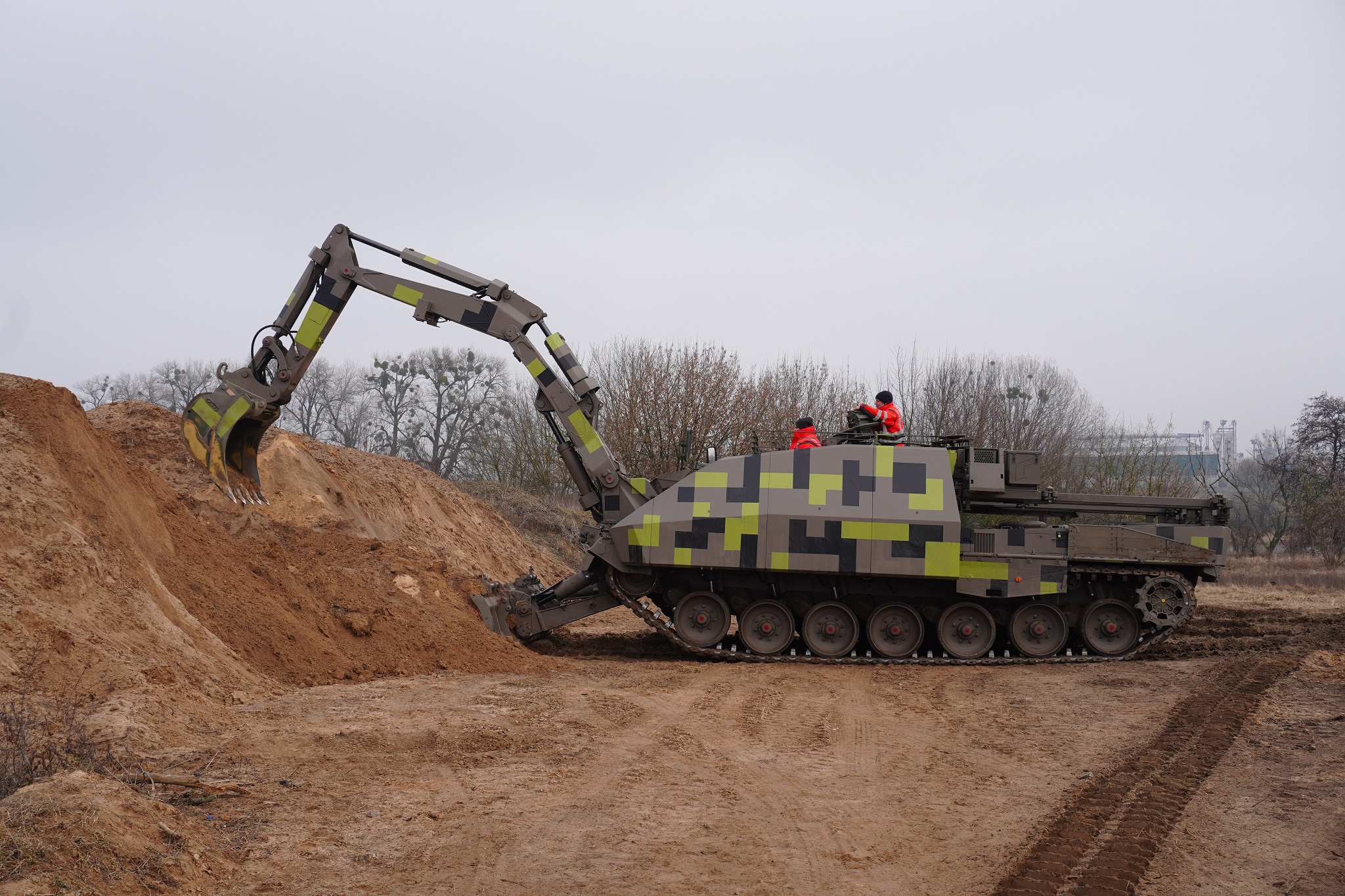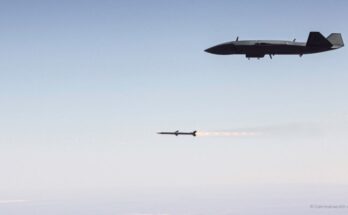
Rheinmetall Landsysteme GmbH recently showcased the Kodiak armored engineer vehicle at a commanders’ conference for the Polish military engineer corps. The demonstration took place in late February at the Ostrowo Krzyckie military training area, attended by representatives from the armed forces, procurement authorities, and industry.
The Kodiak displayed its mobility, acceleration, and speed in off-road conditions, followed by a demonstration of its engineering capabilities. Using its centrally mounted excavator arm and dozer blade, the vehicle carried out tasks such as digging an anti-tank ditch and repairing a damaged flood dam. It also demonstrated its ability to traverse an anti-tank ditch it had previously excavated.
Kodiak and Keiler NG Capabilities
The AEV 3 Kodiak is an armored engineer vehicle based on the Leopard 2 chassis, designed for military engineering operations. It is currently in service with Switzerland, Sweden, the Netherlands, and Singapore, among others. In 2021, the Bundeswehr ordered 44 Kodiak vehicles.
Rheinmetall also highlighted the Kodiak’s adaptability for mine clearance, demonstrating its conversion into the Keiler Next Generation (NG) armoured breaching vehicle. This system, introduced at Eurosatory 2024, is designed for clearing battlefield obstacles. The Keiler NG can be equipped with various modular add-ons, including a mine plough, rocket-assisted detonation cord system, and lane marking system.
The event included an exhibition of these modular components, showcasing how the Kodiak/Keiler NG system can be configured for obstacle clearance operations. Both vehicles are equipped with the ROSY quick-fog protection system and the Natter 12.7 remote-controlled weapon station for self-defense.
A military history enthusiast, Richard began at Forecast International as editor of the World Weapons Weekly newsletter. As the Internet grew in importance as a research tool, he helped design the company's Forecast Intelligence Center and currently coordinates the EMarket Alert newsletters for clients. Richard also manages social media efforts, including two new blogs: Defense & Security Monitor, covering defense systems and international issues, and Flight Plan, which focuses on commercial aviation and space systems. For over 30 years, Richard has authored the Defense & Aerospace Companies, Volume I (North America) and Volume II (International) services. The two books provide detailed data on major aerospace and defense contractors. He also edits the International Contractors service, a database that tracks all the contractors involved in the programs covered in the FI library. More recently he was appointed Manager, Information Services Group (ISG), a new unit that encompasses developing outbound content for both Forecast International and Military Periscope.


